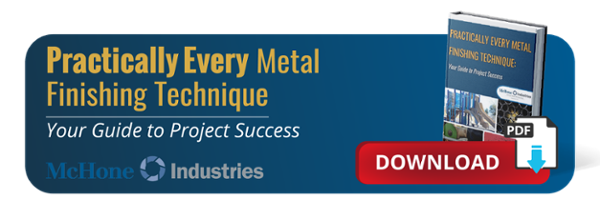
Manufacturers -- at least the ones who aren’t intentionally making a cheap piece of crap -- go through all sorts of tricks to ensure product longevity. From a physical standpoint, there are two ways to control that with metal tubing -- material choice and surface finish choice.
Whether powder coated tubing will serve your purposes better than, say, painted or anodized aluminum tubing is a tough question. The answer is … it depends.
Aluminum or Powder Coated Tubing: Which Protection Works Best?
Painting, anodizing, and powder coating all have pluses and minuses, and they help determine which one will do better in a particular application. Here’s an overview.
Anodizing
This approach is essentially an enhancement of natural aluminum oxide formation. Instead of leaving it up to nature, an electrochemical process forms the coating.
The advantage is the protective layer can be thicker than it would be naturally. The thicker the coating, the longer it protects.
The advantages of anodizing include:
- Lower cost than painting or powder coating
- Durability that stands up to bumps, bangs, and abrasion
- No peeling
- Good appearance
- Resistance to UV damage
- Compliance with environmental regulations
Unfortunately, the anodized surface is susceptible to damage from acidic environments like those found in urban areas where air pollutants can cause problems. However, a thicker anodized layer can prolong the metal’s service life.
Can’t bear to pick one or the other in the battle of powder coating aluminum vs. anodizing? It’s also possible to apply powder coating over anodized aluminum. (More on that later.)
Painting
Both liquid paints and powder coating depend on surface preparation to be effective. Still, most paint will not last beyond 5 years in exterior applications, so upkeep is necessary.
On the other hand, paint performs well in terms of chemical and UV resistance and superior weatherability.
Paints, especially those using PVDF resin, have several other advantages:
- Extensive range of color choices that can be produced in small batches
- Longer-lasting in corrosive environments than anodized aluminum
- Resists crazing (a real term, folks) better than anodized aluminum during fabrication
Powder Coating
Advantages of powder coating include:
- Not harmful to humans
- More durable than paint
- Available in more colors than you think!
A significant drawback to liquid paint is the emission of VOCs -- volatile organic compounds. These air pollutants affect human health and are, therefore, regulated. Powder coatings have the distinct advantage of producing few, if any, VOCs because the liquid component that generates them is lacking.
The aluminum powder coating process produces a highly durable coating and consists of applying heat to cure an electrostatically sprayed-on layer of powder that fuses with the metal. This process results in a coating that’s stronger and harder than paint.
It’s also possible to combine the advantages of anodizing with the pluses of powder coating by powder coating anodized aluminum. You can add powder coating over anodized aluminum to benefit from the range of colors and other features of powder coating.
On the minus side, powder coatings are usually available only in large batches. So custom colors can be quite costly because of the process required to manufacture the powder. If you’re outsourcing powder coating services, you’ll have to see what your contractor charges for non-standard colors.
Maybe You Don’t Need to Do Anything
One nice feature of aluminum is that it makes its own luck. What do we mean by that? When the metal comes into contact with air or water, aluminum oxide forms. It stops oxidation and creates a barrier against corrosion rather than hoping Mother Nature is kind to it.
The problem with this solution is that it’s pH-dependent. If the pH of the surrounding environment drops below 7.0 or rises above 9.0, corrosion sets in. You don’t want to depend on the aluminum oxide layer to protect your metal outside this relatively narrow pH range.
Additionally, the layer of aluminum oxide becomes unstable in the presence of “aggressive ions,” such as chlorine. When this happens, crevice corrosion and other bad stuff happens. If you want your metal to last, and you don’t want to switch to something like stainless steel, you’re going to have to powder coat, anodize, or paint it.
Aluminum or Stainless Steel?
The key to choosing the right aluminum coating is the application. For example, if your metal tubing application will be in a corrosive environment where abrasion and bumps are an issue, you probably won’t choose anodizing alone or paint alone. You might want to anodize the metal and apply a powder coating.
Or you can select stainless steel.
What are the biggest deciders in choosing aluminum vs. steel tubing? If weight is an issue, you can keep it down with aluminum. If impact resistance, corrosion resistance, or weldability is a challenge for you stainless steel could be a better choice. Bonus: Stainless steel, pound for pound, costs less than aluminum.
All this is not to say stainless is more often the better alternative. Aluminum looks good and keeps looking good in the right environment. In situations that don’t require resistance to extreme structural or physical demands, aluminum remains the metal of choice.
Phone a Friend
When you have a question about whether to use a coating, and which one (or two) to choose, ask somebody with experience. Aluminum tube bending companies have experts on staff to help you make the right decision based on your specific application.


